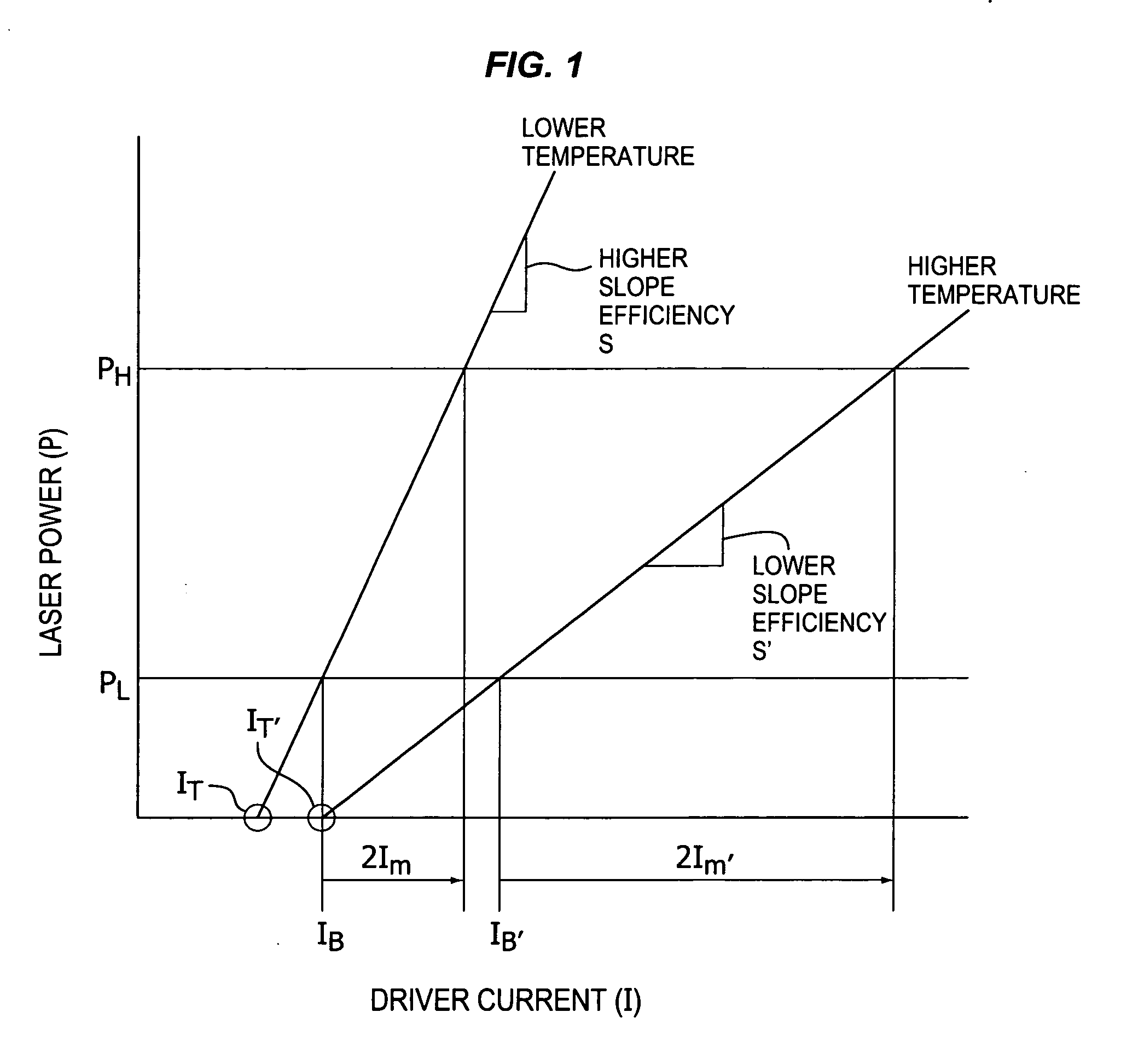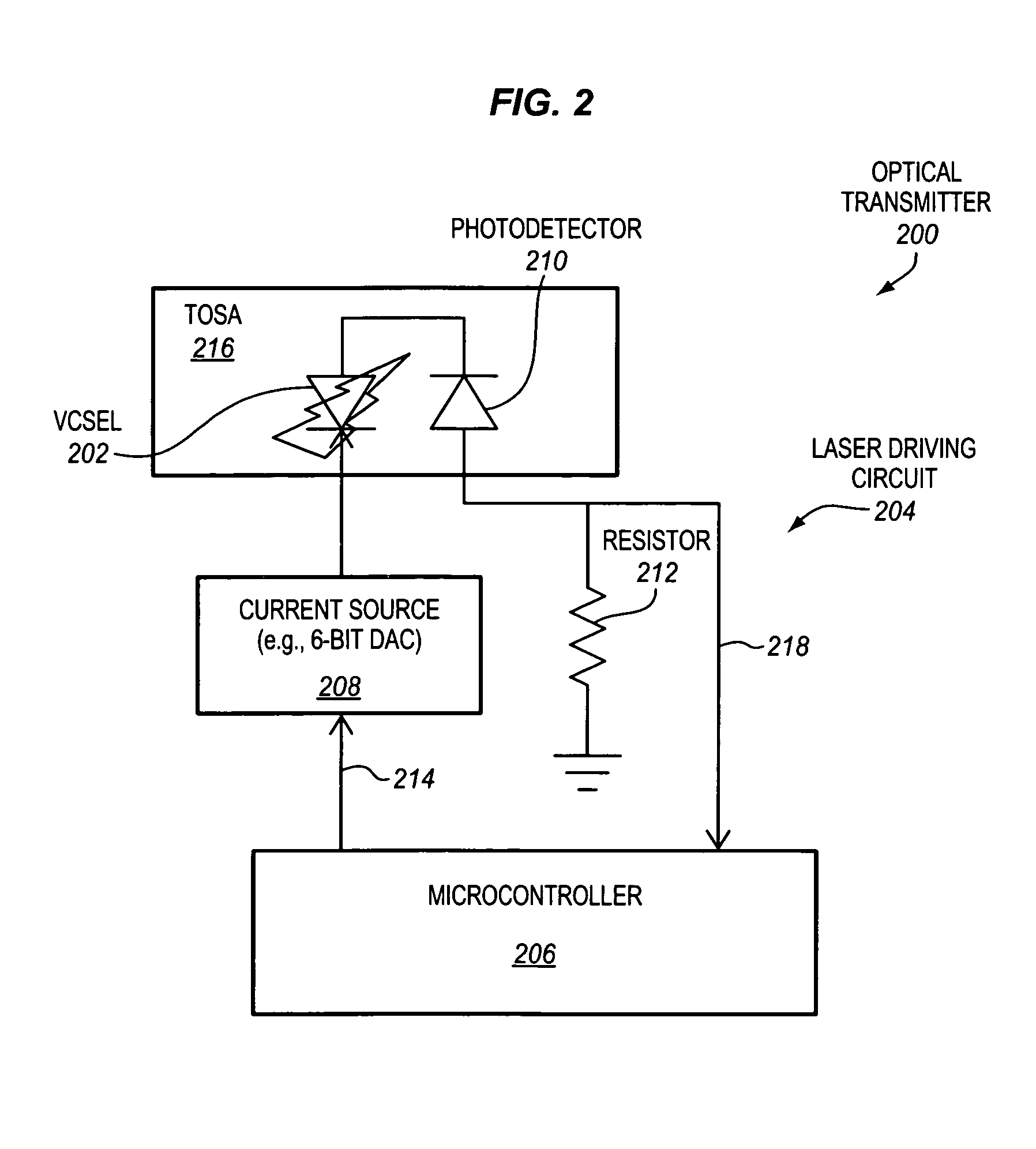Controlling optical power and extincation ratio of a semiconductor laser
a technology of optical power and extinction ratio, which is applied in the direction of semiconductor lasers, instruments, optical elements, etc., can solve the problems of significant diminishing the performance of optical transceivers in which the semiconductor lasers are employed, increasing temperature, and certain characteristics of the semiconductor lasers that may change with temperatur
- Summary
- Abstract
- Description
- Claims
- Application Information
AI Technical Summary
Problems solved by technology
Method used
Image
Examples
Embodiment Construction
[0018] In the following description, numerous specific details are set forth. However, it is understood that embodiments of the invention may be practiced without these specific details. In other instances, well-known circuits, structures and techniques have not been shown in detail in order not to obscure the understanding of this description.
[0019]FIG. 1 is a plot showing representative laser output power versus laser input drive current characteristics for a semiconductor laser at two different temperatures, according to one or more embodiments. Vertical cavity surface emitting laser (VCSELs) and Fabry-Perot lasers tend to exhibit similar characteristics. Other types of semiconductor lasers may also have a slope efficiency and / or threshold current that may depend upon temperature.
[0020] The plot shows driver current (I) that is provided to the laser on the horizontal axis, and laser output power (P) that corresponds to the driver current on the vertical axis. Two different “cur...
PUM
 Login to View More
Login to View More Abstract
Description
Claims
Application Information
 Login to View More
Login to View More - R&D
- Intellectual Property
- Life Sciences
- Materials
- Tech Scout
- Unparalleled Data Quality
- Higher Quality Content
- 60% Fewer Hallucinations
Browse by: Latest US Patents, China's latest patents, Technical Efficacy Thesaurus, Application Domain, Technology Topic, Popular Technical Reports.
© 2025 PatSnap. All rights reserved.Legal|Privacy policy|Modern Slavery Act Transparency Statement|Sitemap|About US| Contact US: help@patsnap.com



